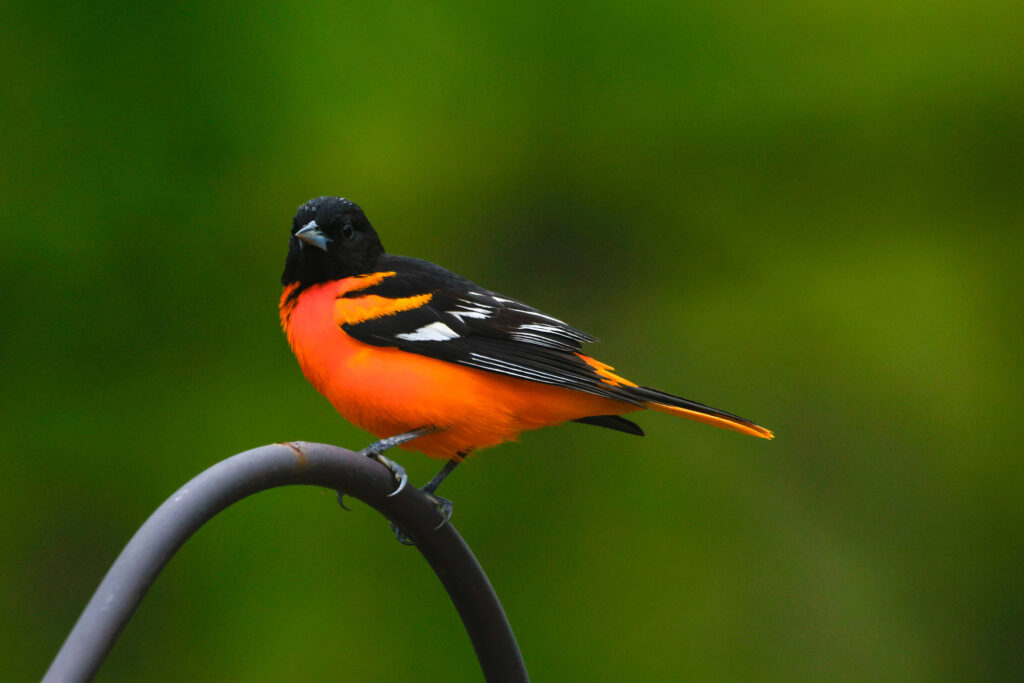When talking about blackbirds in Nebraska, it is important to note that we are not talking about blackbirds.
In color, not all blackbirds are black with black wings. Most of the blackbirds you will find in Nebraska (except for the first bird on this list—a European introduction) are members of the Icteridae family.
These common songbirds are known as “new world blackbirds.” These birds have distinctive, musical songs.
Learning a little more about these species can help us see that they are far more than just the agricultural pests or feeder aggressors they are often deemed to be. These fascinating species are intriguing in more ways than one.
Below, read up on the species of blackbirds that bird watchers are most likely to see in Nebraska, what they look like, and when you might expect to see each of them in your state.
European Starling
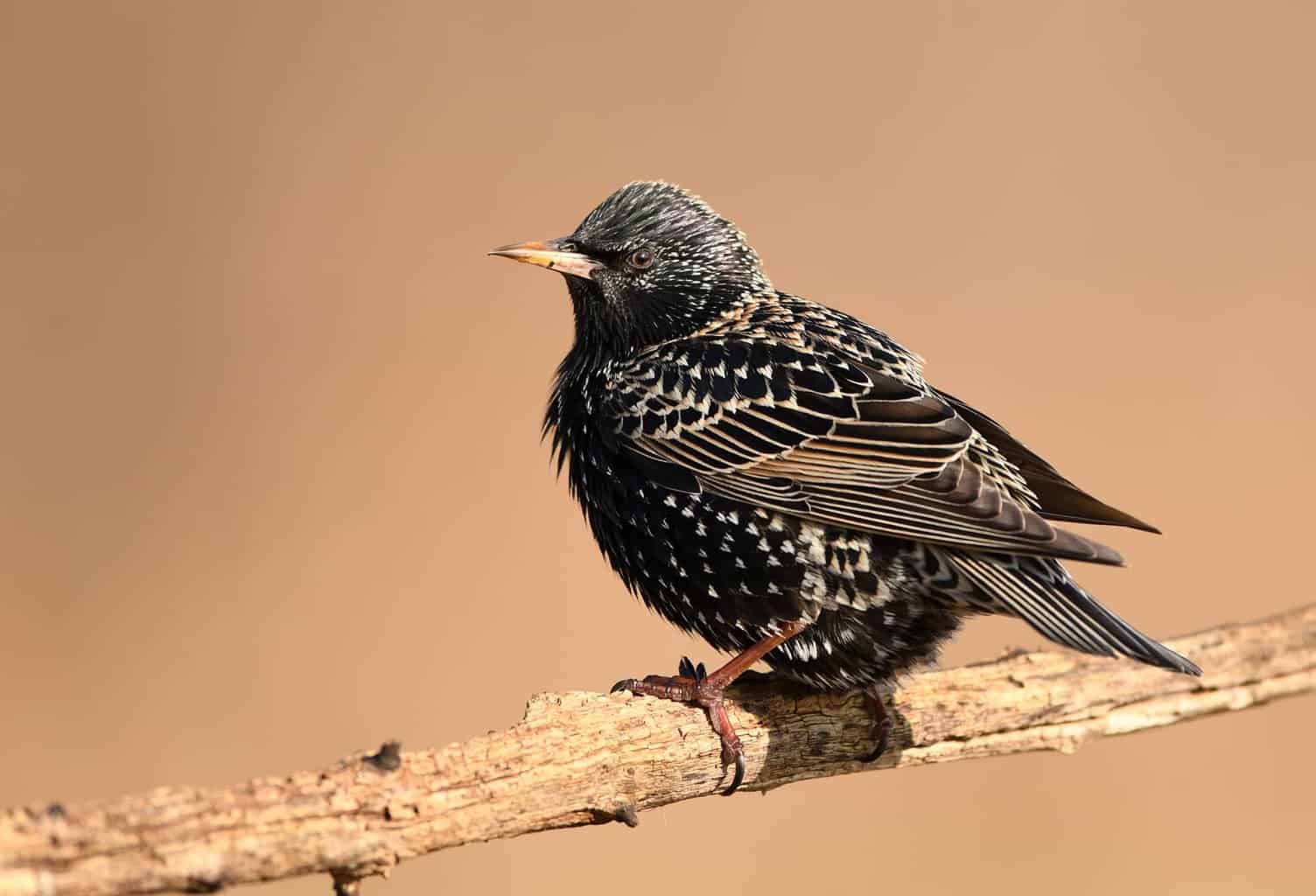
- Scientific Name: Sturnus vulgaris
- Length: 7.9 – 9.1 in (20 – 23 cm)
- Weight: 2.1 – 3.4 oz (60 – 96 g)
- Wingspan: 12.2 – 15.8 in (31 – 40 cm)
The European starling is not native to the US, but since introduced, it has become one of the most commonly sighted songbirds.
It has luminosity in purples, blues, and greens when seen up close, and may sometimes be seen gathered in massive flocks swooping in soaring murmurations in the skies.
These birds are pretty common in Nebraska year-round. Over a third of Nebraska birdwatchers submitted checklists for summer and winter incorporating this species.
Red-Winged Blackbird
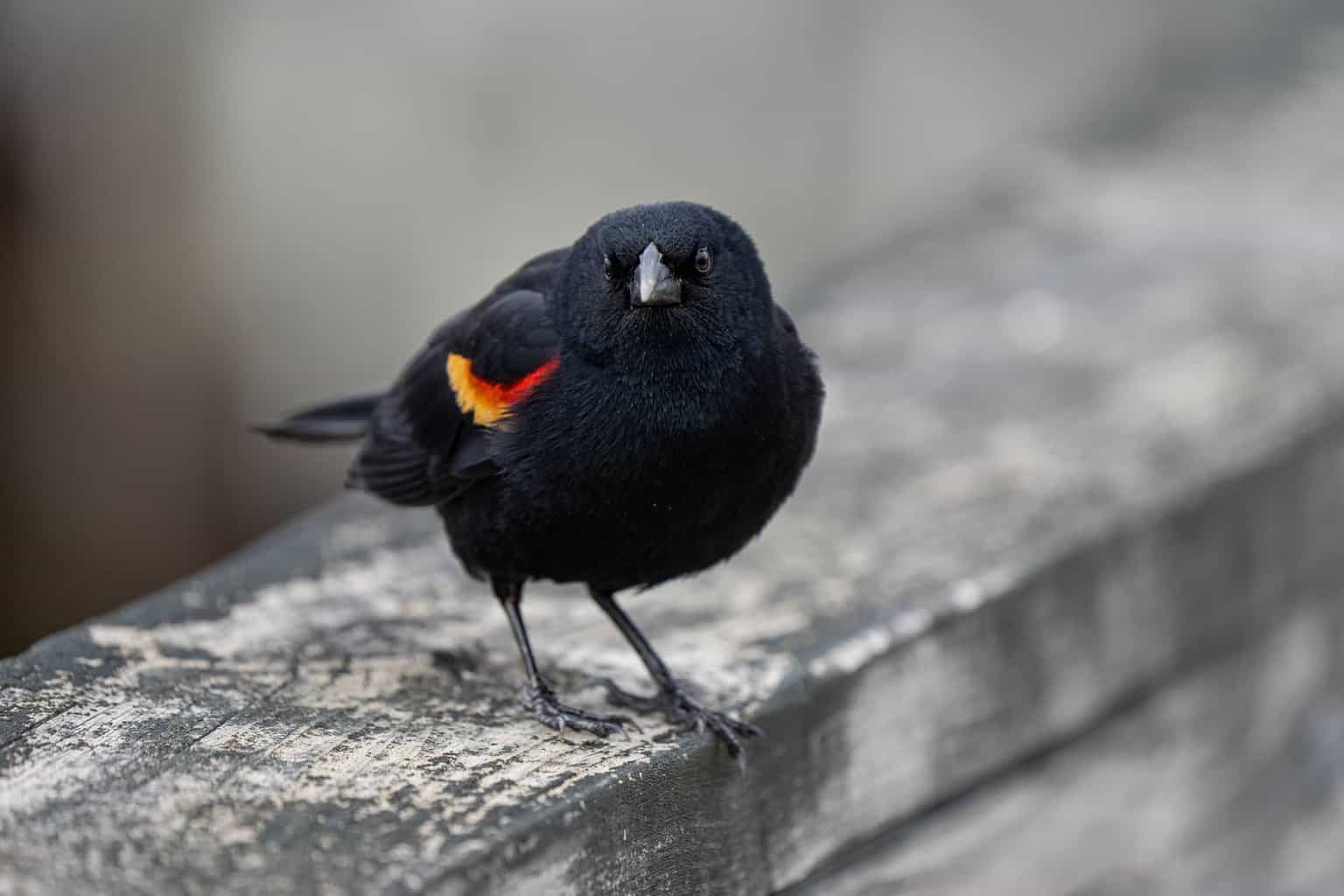
- Scientific Name: Agelaius phoeniceus
- Length: 6.7 – 9.1 in (17 – 23 cm)
- Weight: 1.1 – 2.7 oz (32 – 77 g)
- Wingspan: 12.2 – 15.8 in (31 – 40 cm)
Another very common site in Nebraska, the red-winged blackbird males are all black, except for flashes of red on their wings. The females are brown with streaks.
These are found in half of all birdwatcher’s checklists in Nebraska in summer and are also seen (though far less frequently) through the winter months.
They will tend to arrive in spring and depart for the southern wintering grounds in fall, but some individuals remain here year-round.
Common Grackle
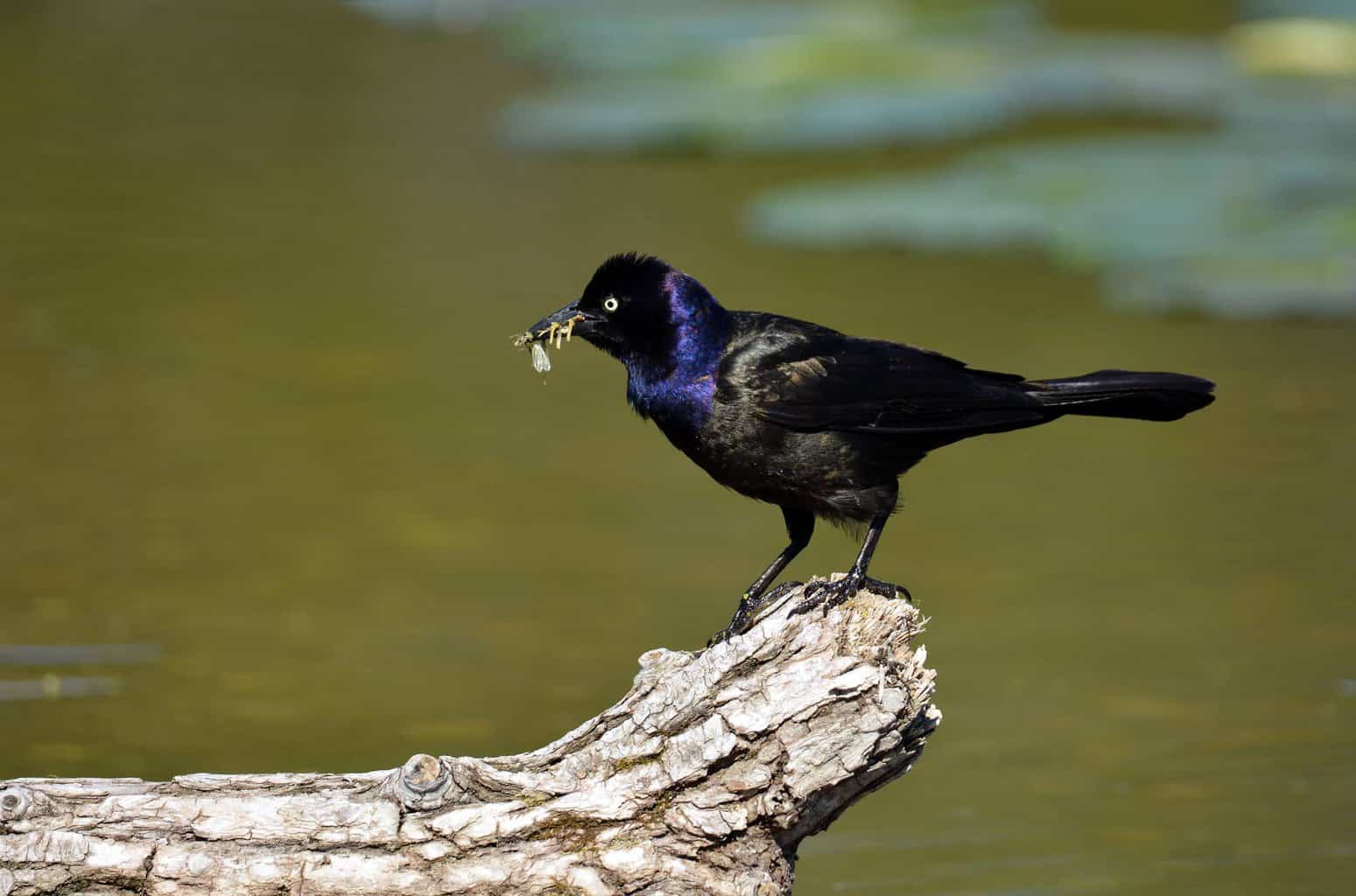
- Scientific Name: Quiscalus quiscula
- Length: 11.0 – 13.4 in (28 – 34 cm)
- Weight: 2.6 – 5.0 oz (74 – 142 g)
- Wingspan: 14.2 – 18.1 in (36 – 46 cm)
Both male and female birds are black and glossy, though the males have more iridescent plumage. These birds are a little taller than other blackbirds and have slightly longer tails.
In Nebraska, these birds are most commonly seen in summer, when, although they are considered to be a near-threatened species, they appear in over half of the birdwatchers’ checklists from the state.
They tend to migrate, coming here in spring, remaining for the summer breeding season, then departing in fall for the south. A few individuals, however, do remain in the state through the winter months.
Western Meadowlark
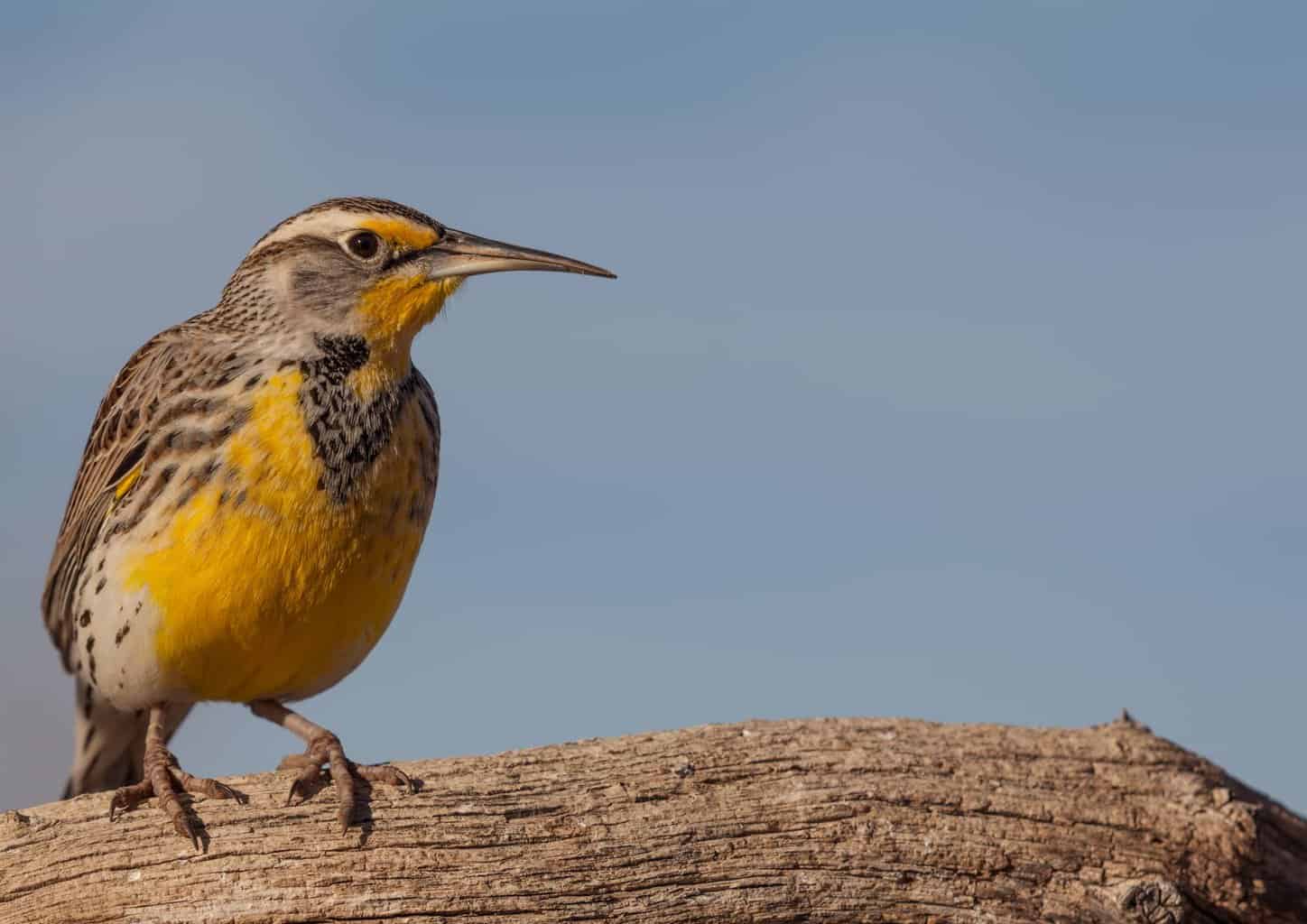
- Scientific Name: Sturnella neglecta
- Length: 6.3 – 10.2 in (16 – 26 cm)
- Weight: 3.1 – 4.1 oz (89 – 115 g)
- Wingspan: 16.1 in (41 cm)
Well known for their bright yellow bellies and musical songs, these birds have V-shaped black bands across their breasts. The yellow color fades to gray in winter, while the upper brown and white feathering remains.
Spotted by around a third of birdwatchers in Nebraska in summer, western meadowlarks are most commonly seen here between March and October. However, they are sometimes also spotted here in winter.
Brown-Headed Cowbird

- Scientific Name: Molothrus ater
- Length: 76.3 – 8.7 in (19 – 22 cm)
- Weight: 1.3 – 1.8 oz (42 – 50 g)
- Wingspan: 14.2 in (36 cm)
The males have, as the name suggests, brown heads. The rest of them is black. The females are gray-brown all over, however, and are somewhat smaller than the males.
These birds are commonly spotted in Nebraska over the breeding season. You will most likely see them in the state from March to August.
By the end of August, most will have headed south on the migration. However, some will remain in the state year-round.
Baltimore Oriole
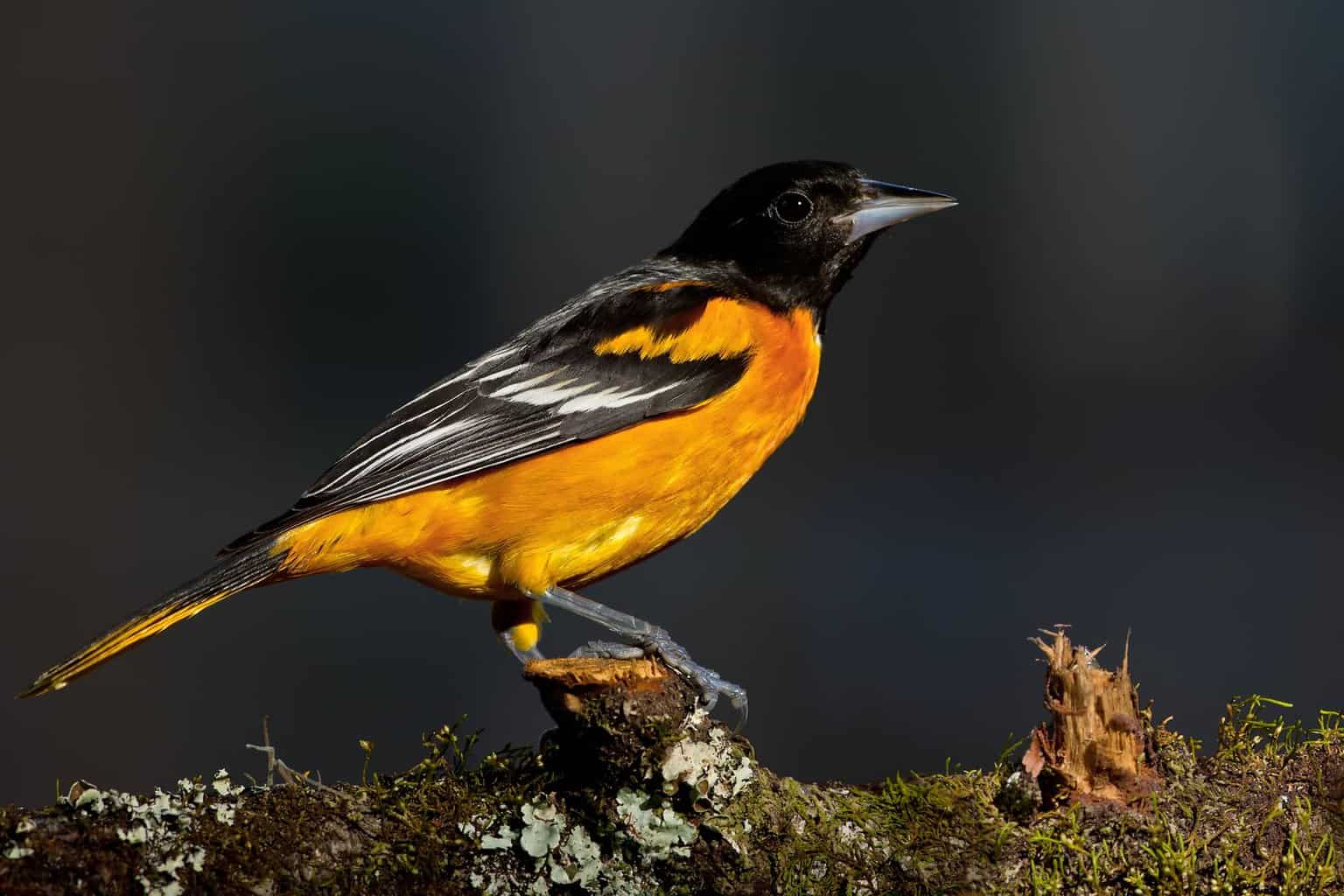
- Scientific Name: Icterus galbula
- Length: 6.7 – 7.5 in (17 – 19 cm)
- Weight: 1.1 – 1.4 oz (30 – 40 g)
- Wingspan: 9.1 – 11.8 in (23 – 30 cm)
These orioles are around the size of a robin. The adult males are bright orange and black, with white wing bars.
The females are brownish yellow, with brown-gray wings and yellowish undersides.
You stand a good chance of seeing Baltimore orioles in Nebraska between May and September, though they can arrive from mid-April and some remain through to December.
Orchard Oriole

- Scientific Name: Icterus spurius
- Length: 5.9 – 7.1 in (15 – 18 cm)
- Weight: 0.6 – 1.0 oz (16 – 28 g)
- Wingspan: 9.8 in (25 cm)
Female orchard orioles are green-yellow in hue, darker on top and on their wings around white wing bars, and paler underneath.
The males are bolder and more striking, with black throats and backs and reddish bellies.
Orchard orioles are seen here in Nebraska only during the breeding season, between May and September. In winter, they migrate south to warmer climes.
Eastern Meadowlark

- Scientific Name: Sturnella magna
- Length: 7.5 – 10.2 in (19 – 26 cm)
- Weight: 3.2 – 5.3 oz (90 – 150 g)
- Wingspan: 13.8 – 15.8 in (35 – 40 cm)
Eastern meadowlarks are medium-sized songbirds, with bright yellow bellies and pale brown backs with black markings. Eastern meadowlarks have a distinctive black band across their chest.
Though this species is considered to be near-threatened in Nebraska, they are seen relatively often here between March and October.
Most eastern meadowlarks do migrate south for winter, but some remain resident here in the state year-round.
Yellow-Headed Blackbird
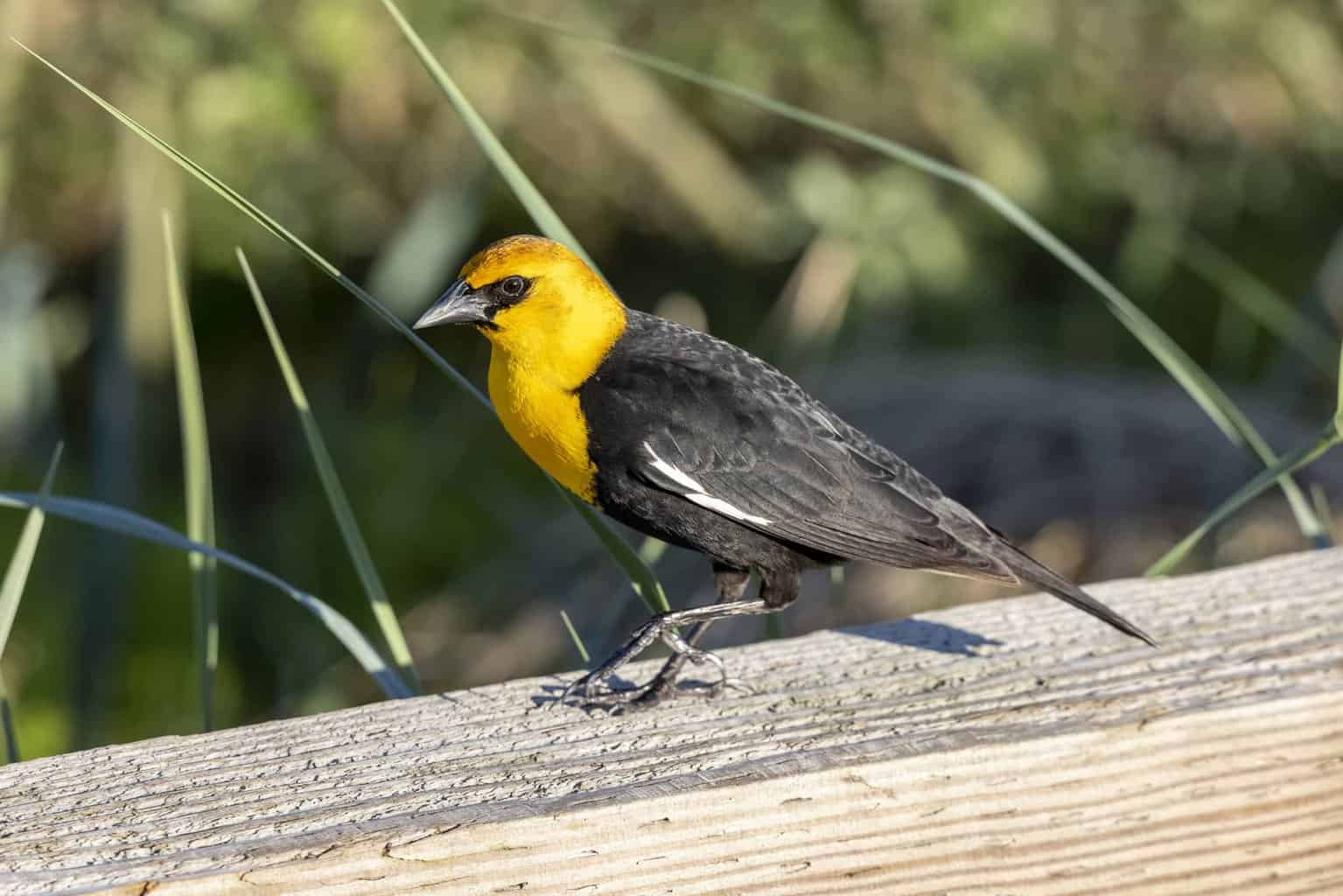
- Scientific Name: Xanthocephalus xanthocephalus
- Length: 8.3-10.2 in (21-26 cm)
- Weight: 1.6-3.5 oz (44-100 g)
- Wingspan: 16.5-17.3 in (42-44 cm)
Yellow-headed blackbirds are slightly larger than red-winged blackbirds. Males have bright yellow heads and chests, white wing patches, and the rest of their body is black. The female birds are mostly brown, and their heads are a duller yellow in hue.
Though not all that common in Nebraska, yellow-headed blackbirds can be spotted here between March—through the abundant spring—and October.
Great-Tailed Grackle

- Scientific Name: Quiscalus mexicanus
- Length: 15.0 – 18.1 in (38 – 46 cm)
- Weight: 3.7 – 6.7 oz (105 – 190 g)
- Wingspan: 18.9 – 22.8 in (48 – 58 cm)
The male great-tailed grackle has long, tapered tails, iridescent black plumage, and yellow eyes. The females have brown coloration, and their tails are thinner than those of the males.
Though not often spotted in Nebraska, great-tailed grackles are recognized as regularly occurring in the state, and can remain here all year. They often enjoy the insects in summer that the landscape provides!
Bobolink

- Scientific Name: Dolichonyx oryzivorus
- Length: 5.9 – 8.3 in (15 – 21 cm)
- Weight: 1.0 – 2.0 oz (29 – 56 g)
- Wingspan: 10.6 in (27 cm)
Bobolink breeding males look rather striking and unusual, with their yellow ‘hair’ patches, black bellies, and white backs.
The non-breeding males and females are less striking, and are streaky brown, with black around their eyes and stripes on top of their heads.
Bobolinks can be seen in Nebraska, for breeding season and nesting, between April and October. Though, they are most commonly seen between May and August.
Brewer’s Blackbird

- Scientific Name: Euphagus cyanocephalus
- Length: 7.9 – 9.8 in (20 – 25 cm)
- Weight: 1.8 – 3.0 oz (50 – 86 g)
- Wingspan: 14.6 in (37 cm)
These are medium-sized blackbirds. The males are glossy black, with a purple sheen on their heads and a greenish sheen on their bodies. The female birds are a less showy brown.
Brewer’s blackbirds are not a common sight in Nebraska but are recognized as regularly occurring in the state. You may spot them during both the spring and fall migration periods but are most likely to see them in April for the breeding season.
Bullock’s Oriole

- Scientific Name: Icterus bullockii
- Length: 6.7 – 7.5 in (17 – 19 cm)
- Weight: 1.0 – 1.5 oz (29 – 43 g)
- Wingspan: 12.2 in (31 cm)
The male of this species is bright orange, with black and white wings and black head markings.
The female birds and juveniles of the species have gray backs and are yellowish on their heads, tails, and underside.
Bullock’s oriole is another bird that is recognized to occur regularly in Nebraska, though it is very rarely spotted. It may be seen in the west of the state between May and September.
Rusty Blackbird

- Scientific Name: Euphagus carolinus
- Length: 8.3 – 9.8 in (21 – 25 cm)
- Weight: 1.7 – 2.8 oz (47 – 80 g)
- Wingspan: 14.6 in (37 cm)
This is a vulnerable species, whose numbers have declined dramatically in recent years.
However, these birds can be found in Nebraska during the winter months, when the males have their rusty non-breeding appearance.
They begin to arrive here in September and some may stay as late as April. But you stand the best chance of seeing them here during the fall migration period in October or November.
Final Thoughts
Sightings of other blackbirds are extremely rare in Nebraska, so the species listed above are the main ones to look out for if you are birdwatching in this state. To your surprise, many are beautiful, colorful, and have musical songs!

